Philodendrons are among the most popular houseplants thanks to their reputation for being low-maintenance, growing quickly, and producing big and beautiful glossy leaves. Philodendrons are typically highly adaptable and can thrive in a range of indoor conditions, including in areas where you do not have the best natural light or ventilation.
Most plants called “philodendrons” belong to the family Araceae, which is a large genus of flowering plants that contains hundreds of different species. These plants come in a range of sizes, shapes, and colors – offering you incredible variety.
This article covers 17 of the most popular philodendrons so that you can choose which ones you might want to add to your plant collection! You will also learn about some of the key features of a philodendron and discover tips for how to care for these plans.
Let’s jump in to learn about these 17 types of philodendrons together now.
About Philodendrons
The 17 types of philodendrons in this article are plants in the Araceae group. In the genus Philodendron, there are about 45 different species of plants. However, there are many other cultivars. Additionally, some plants known commonly as “philodendrons” belong to other neighboring genera. What these plants have in common is that they are native to a tropical rainforest habitat, such as that found in parts of Central America, South America, and the Caribbean. However, they have been cultivated and become popular among houseplant lovers who can grow them with ease in a home or office environment.
In general, the plants known as “philodendrons” can be sorted into one of two categories: vining (or “climbing”) or self-heading (or “upright”). Vining philodendrons create long trailing vines with leaves, naturally seeking support from other plants or structures, such as a tree or wall. Most of these vining philodendrons are talented climbers. Self-heading philodendrons grow in an upright position and appear natively in the wild on the forest floor, where they grow upward toward the light from the sun.
The leaves of philodendron plants is typically green. However, some varieties have leaves that are orange, red, purple, or variegated with white or another color. The shape, size, and texture of a philodendron’s leaves vary depending on the exact species and the maturity of the plant in question.
Today, there are numerous philodendrons in cultivation. Among the most common is the heartleaf philodendron. With that in mind, let’s explore 17 types of philodendron plants you can cultivate at your home or office! We can begin with the most famous: the heartleaf philodendron!
1. Green Heartleaf Philodendron (Philodendron hedaraceum)
The green heartleaf philodendron, also known as a “sweetheart philodendron” is one of the most common and popular species of philodendron. It may be what you and most people imagine when you think of a philodendron! With bright green leaves and lush foliage, this vining philodendron is sometimes mistaken for a pothos. This philodendron grows natively in Central America and parts of the Caribbean.

The green heartleaf philodendron, also known as a “sweetheart philodendron,” has glossy green leaves.
©iStock.com/Amphawan Chanunpha
2. Philodendron Micans (Philodendron micans)
The velvet leaf philodendron, also known as the “philodendron micans,” is a vining philodendron beloved for being a beautiful and low-maintenance addition to any home. Its leaves are soft and velvety to the touch. This type of philodendron grows natively in Mexico and parts of the Caribbean.

has soft, velvet-like leaves.
©AngieYeoh/Shutterstock.com
3. Variegated Heart Leaf Philodendron (Philodendron hederaceum ‘Brasil’)
The variegated heart leaf philodendron, also known as “philodendron Brasil” for short, has heart-shaped leaves and variegated, or multi-colored, leaves streaked in yellow and green. This philodendron grows natively through rainforest environments in South America. Because of that, it will thrive in conditions of high humidity and needs light and regular watering to keep its colorful leaves happy and bright. These plants also propagate easily! Simply trim the stem and place it in water to root.

propagates easily if you trim the stem and place it in water to root.
©mokjc/Shutterstock.com
4. Oak Leaf Philodendron (Philodendron pedatum)
The oak leaf philodendron is a very recognizable climbing philodendron, with glossy green leaves that can hang from a planter or climb to heights of 9 feet if it has the right support. The avid climber gained its nickname for having leaves that resemble those of an oak tree! This philodendron grows natively in Venezuela and Brazil.
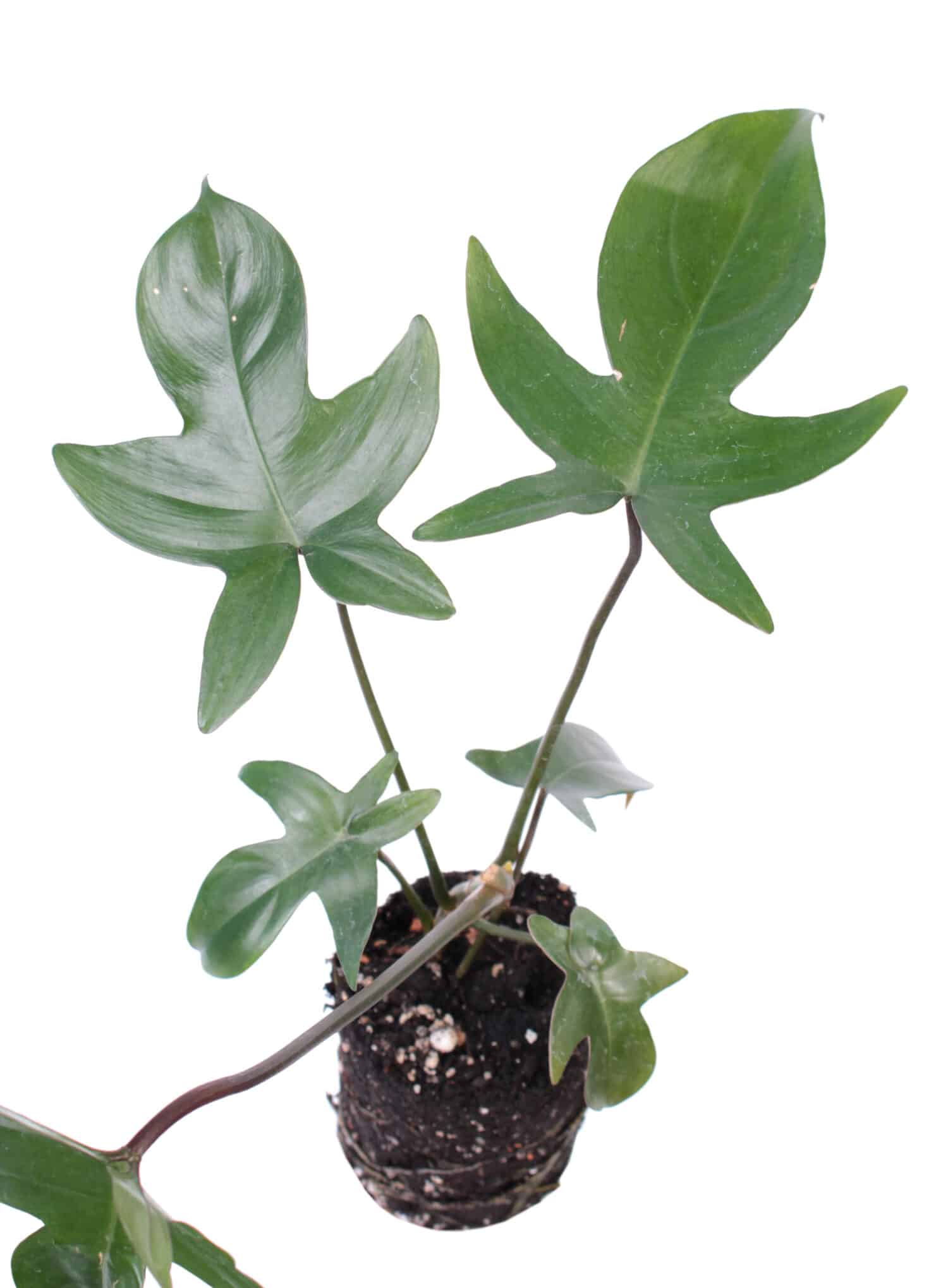
The oak leaf philodendron gained its nickname for having foliage that resembles that of an oak.
©Kazakov Maksim/Shutterstock.com
5. Ecuador Philodendron (Philodendron verrucosum)
The Educator philodendron has velvety leaves that have neon green veins and a striking reddish color. The leaves on this climbing philodendron can easily grow to be several inches wide. Though it may be rare in a local plant nursery, you can always purchase this philodendron from plant experts online. This philodendron grows natively in Ecuador, especially in the country’s dense rainforest jungles.

The
Philodendron verrucosumhouseplant has dark green veined velvety leaves.
©Firn/Shutterstock.com
6. Philodendron Patriciae (Philodendron patriciae ‘Croat’)
The Philodendron patriciae was discovered by a botanist named Thomas Croat back in the 1980s. At the time, he named it after his wife– Patricia. This climbing philodendron can grow impressive vines that reach lengths of up to 30 feet! With long, pod-shaped leaves in a dark juniper color, this philodendron is one of the most unique. This philodendron grows natively in the country of Colombia.
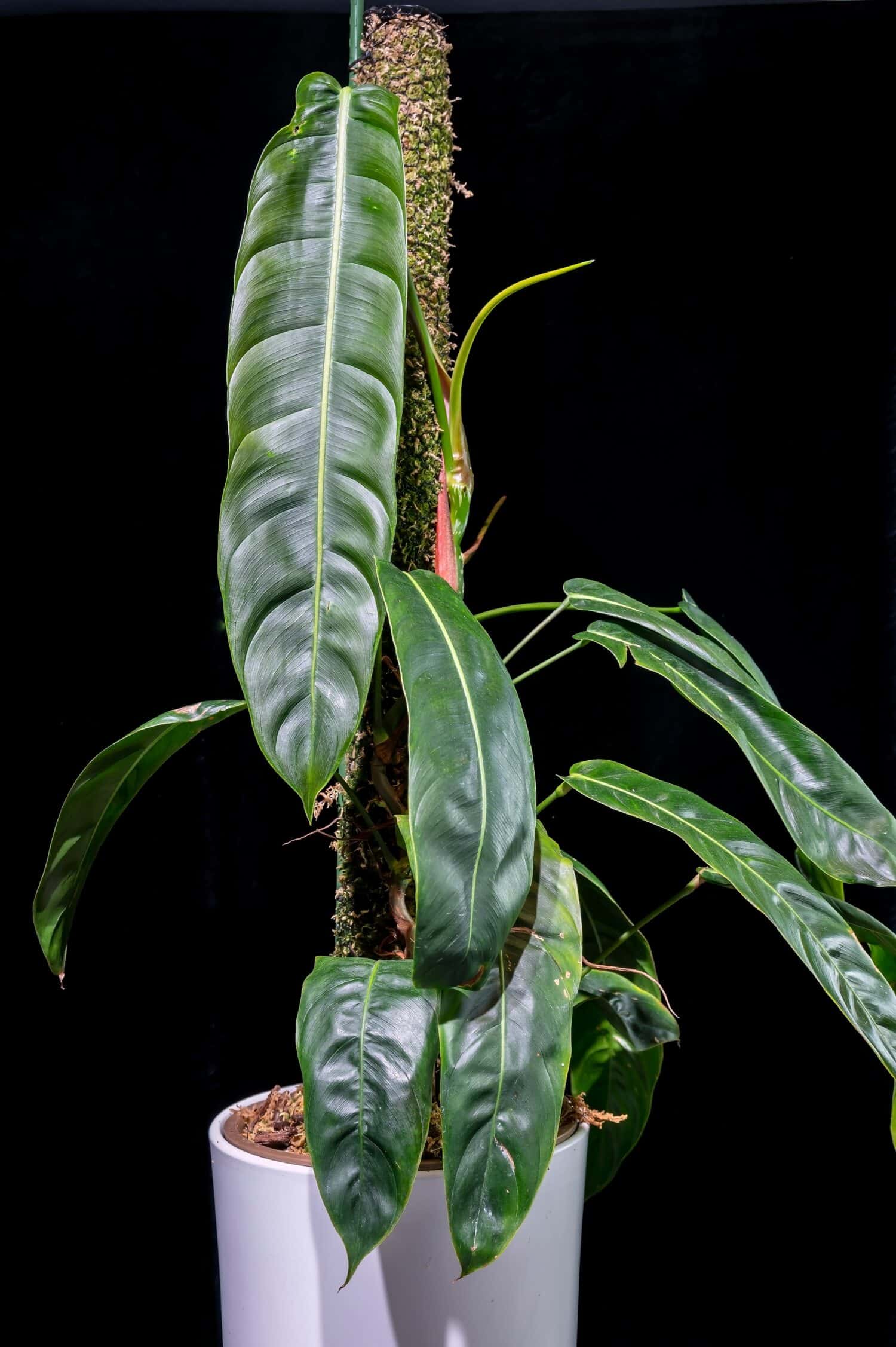
is a rare tropical climbing houseplant with leaves that can ultimately reach one meter or more in length.
©PAUL ATKINSON/Shutterstock.com
7. Philodendron Xanadu (Thaumatophyllum xanadu)
Thaumatophyllum xanadu, also known as philodendron xanadu or winterbourne, is a popular landscaping plant in places with subtropical climates. Formerly called the philodendron xanadu, this is an upright plant that produces dark green split leaves with deep lobes. Since each leaf grows on its own long, green stem, the plant’s foliage can form a “dome” shape of spiky leaves. These philodendrons can easily grow to be 2 to 4 feet tall and 3 to 5 feet across, making a dramatic statement in any room you place it in! This type of philodendron grows natively in Brazil.
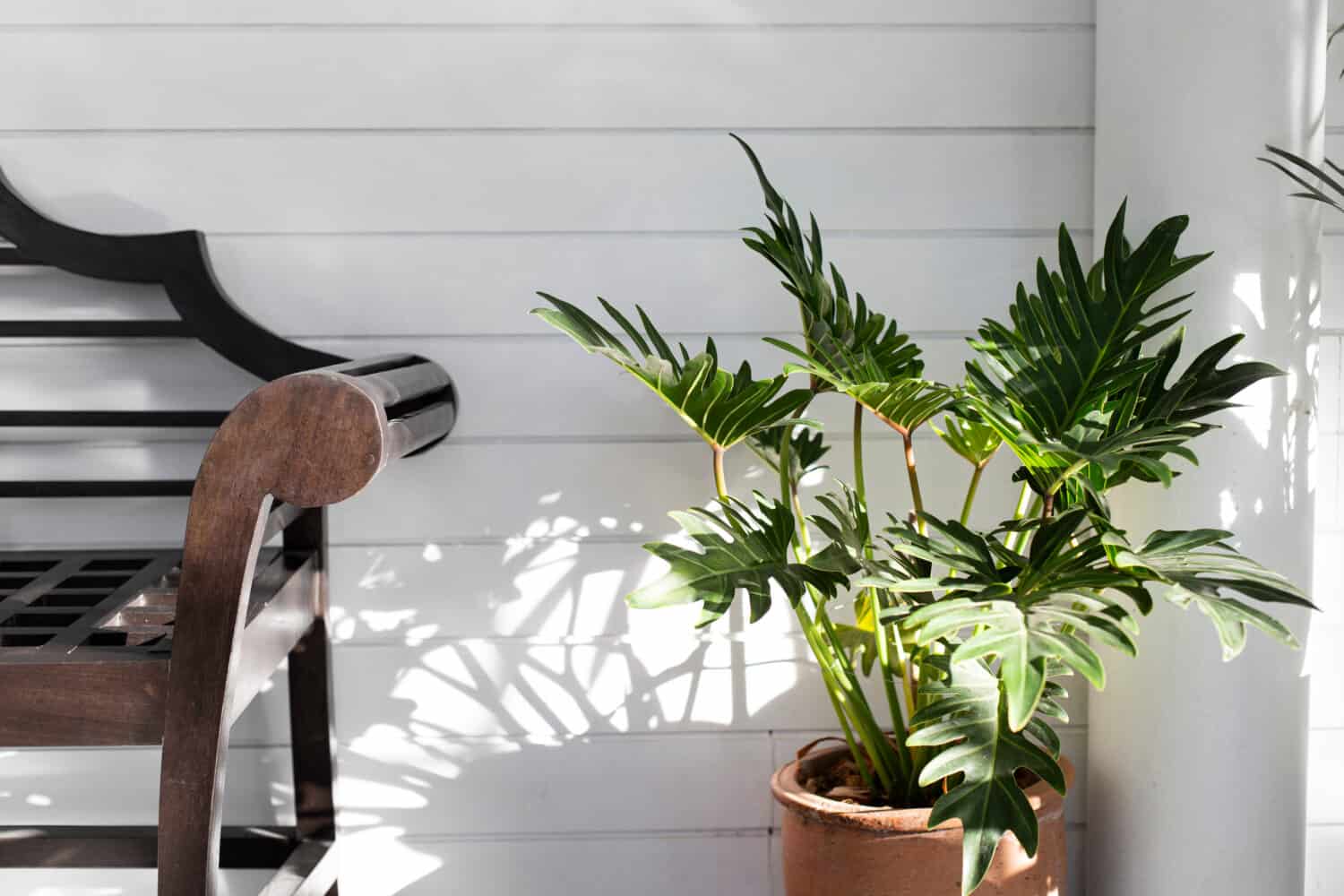
produces upright, spiky leaves.
©pornpawit/Shutterstock.com
8. Philodendron Pink Princess (Philodendron erubescens ‘Pink Princess’)
Philodendron pink princess is a variegated variety, which has long, heart-shaped leaves and beautiful colors in shades of pink and green. This vining philodendron can grow to be 2 feet long, but you could also trim the plant back to give it a bushy appearance instead. This philodendron grows natively in parts of South America, particularly Colombia, where it flowers with blooms in shades of green and white. This is one of the more expensive philodendron varieties, in part because this one is rare. Though the pink princess is a cultivar of the relatively common Philodendron erubescens, the distinctive pink variegation takes intentional effort to grow the cultivar from tissue. That effort makes purchasing this plant a bit pricier than buying another philodendron!
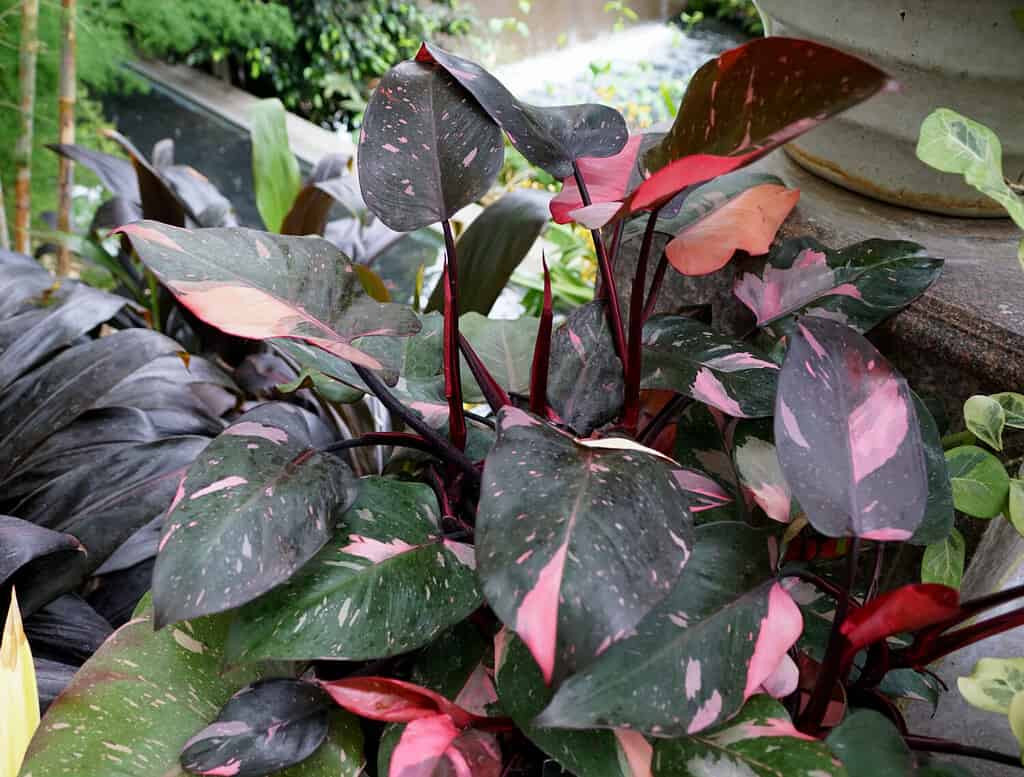
The Pink Princess is rare and expensive due to its special cultivation process.
©Khairil Azhar Junos/Shutterstock.com
9. Rojo Congo (Philodendron tatei ‘Congo Rojo’)
The rojo Congo, or “red Congo,” is a beautiful philodendron with bright red stems and leaves that become dark, forest green as they mature. This hybrid philodendron variety is the result of a cross of two other philodendron varieties. This plant can reach 2 to 3 feet tall when grown indoors as a houseplant. This type of philodendron was developed in the state of Florida but was created from plants native to rainforest environments in Central and South America.

The rojo Congo philodendron may have red stems and red-tinged leaves.
©Marianna Palacios/Shutterstock.com
10. Philodendron Prince Orange (Philodendron ‘Prince of Orange’)
The Prince of Orange philodendron is a cultivar with broad, spear-shaped leaves that grow upright and appear to emerge individually from the soil at the base of the plant. The leaves grow in a range of colors, including shades of green, orange, and copper. When grown as a houseplant, this philodendron will grow upright to about 2 feet tall and 3 feet across.

The Prince of Orange philodendron cultivar has leaves that can be shades of orange or coppery-red.
©LADDAWAN photo/Shutterstock.com
11. Philodendron Gloriosum (Philodendron gloriosum)
Philodendron gloriosum is a unique-looking plant, with large, smooth, thick, and heart-shaped leaves. The leaves are dark green in color, with white veins that give the foliage a striking appearance. What makes the plant especially unusual in appearance is the enormous size of these leaves. They can easily reach 2 feet long! Overall, the plant grows upright and can reach up to 3 feet tall and 4 feet in spread. That makes this philodendron an excellent statement piece for any part of your home.

can be grown as a house plant, but it can reach huge sizes when growing in its native rainforest habitat.
©mokjc/Shutterstock.com
12. White Wave (Philodendron birkin)
The philodendron white wave, which is also referred to as “Birkin,” has green leaves with white stripes. This plant is a rare mutation of Philodendron ‘Rojo Congo’ which has creamy white variegated leaves. As a new, unique cultivar that is not found in nature, this plant has become a favorite among plant collectors.
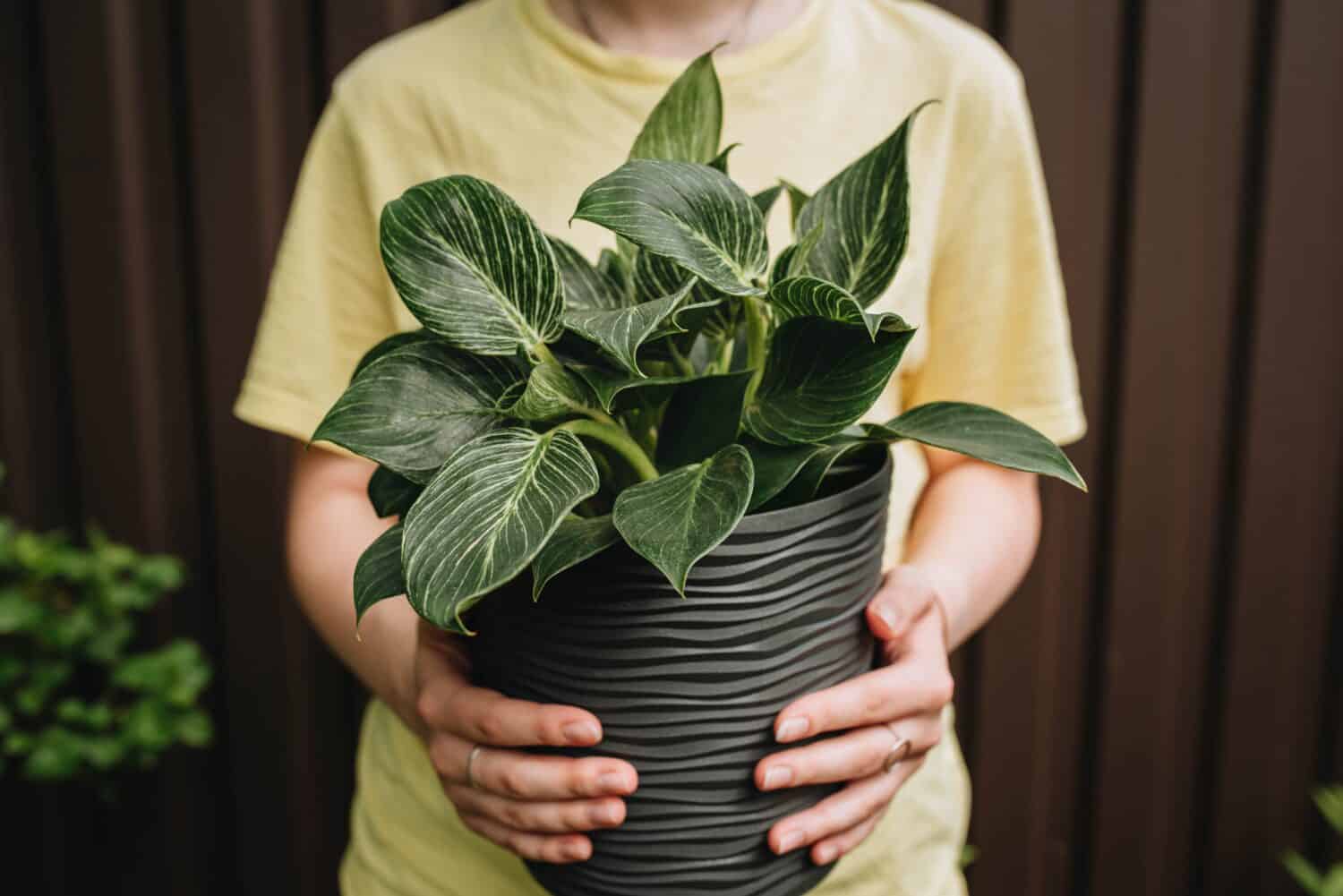
The white wave philodendron, which is also referred to as “Birkin,” has green leaves with white stripes.
©Darina Saukh/Shutterstock.com
13. Philodendron Crassinervium (Philodendron crassinervium)
Philodendron crassinervium has oval, glossy green leaves that creep along as a low-climbing vine. It has long, blade-like leaves that are light green in color. This type of philodendron plant grows natively in Brazil. This unique and unusual plant is rare to find – it grows to enormous sizes in the wild, but is not typically found in plant nurseries.
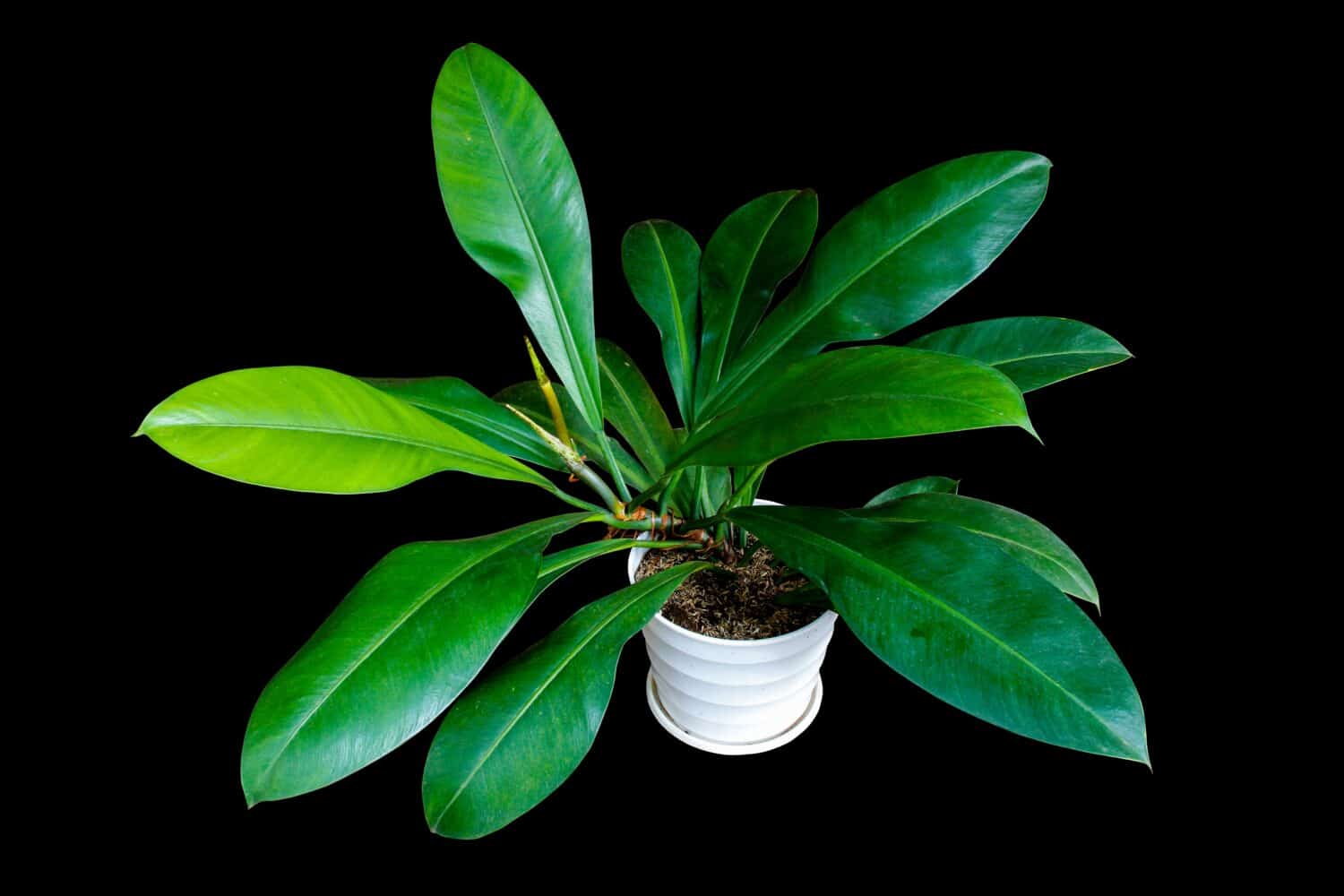
has oval, glossy green leaves that creep along as a low-climbing vine.
©Tri_Visuals/Shutterstock.com
14. Philodendron Esmeraldense (Philodendron esmeraldense)
Philodendron esermaldense grows natively in Ecuador, but was only discovered recently – in the 21st century! This plant’s leaves are bright green and leathery in texture. The long, pointed leaves droop downward from the stems they are attached to. This vining philodendron is a great decorative addition to a table or shelf, since its leaves hang downward and can grow into a long vine.
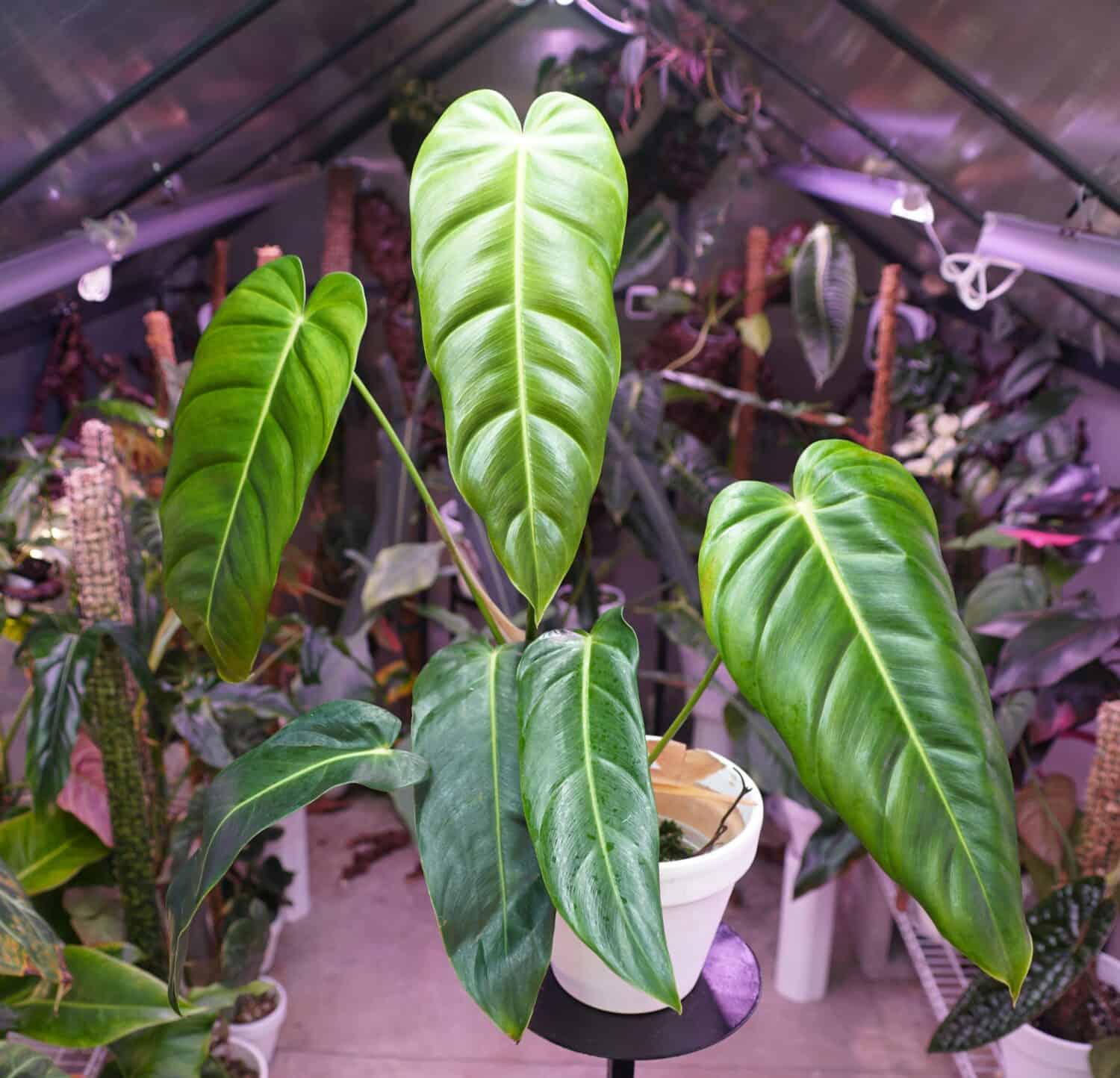
grows natively in Ecuador and has long, leathery leaves.
©Khairil Azhar Junos/Shutterstock.com
15. Philodendron Grazielae (Philodendron grazielae)
Philodendron grazielae is a unique-looking vining philodendron, which produces bright green, plump, wide, heart-shaped leaves. Though it has a slow growth rate, it can eventually reach lengths of up to 3 feet. This plant grows natively in Colombia, Peru, and parts of Brazil. There, it grows upright on thick stems and can easily reach 3 feet tall.
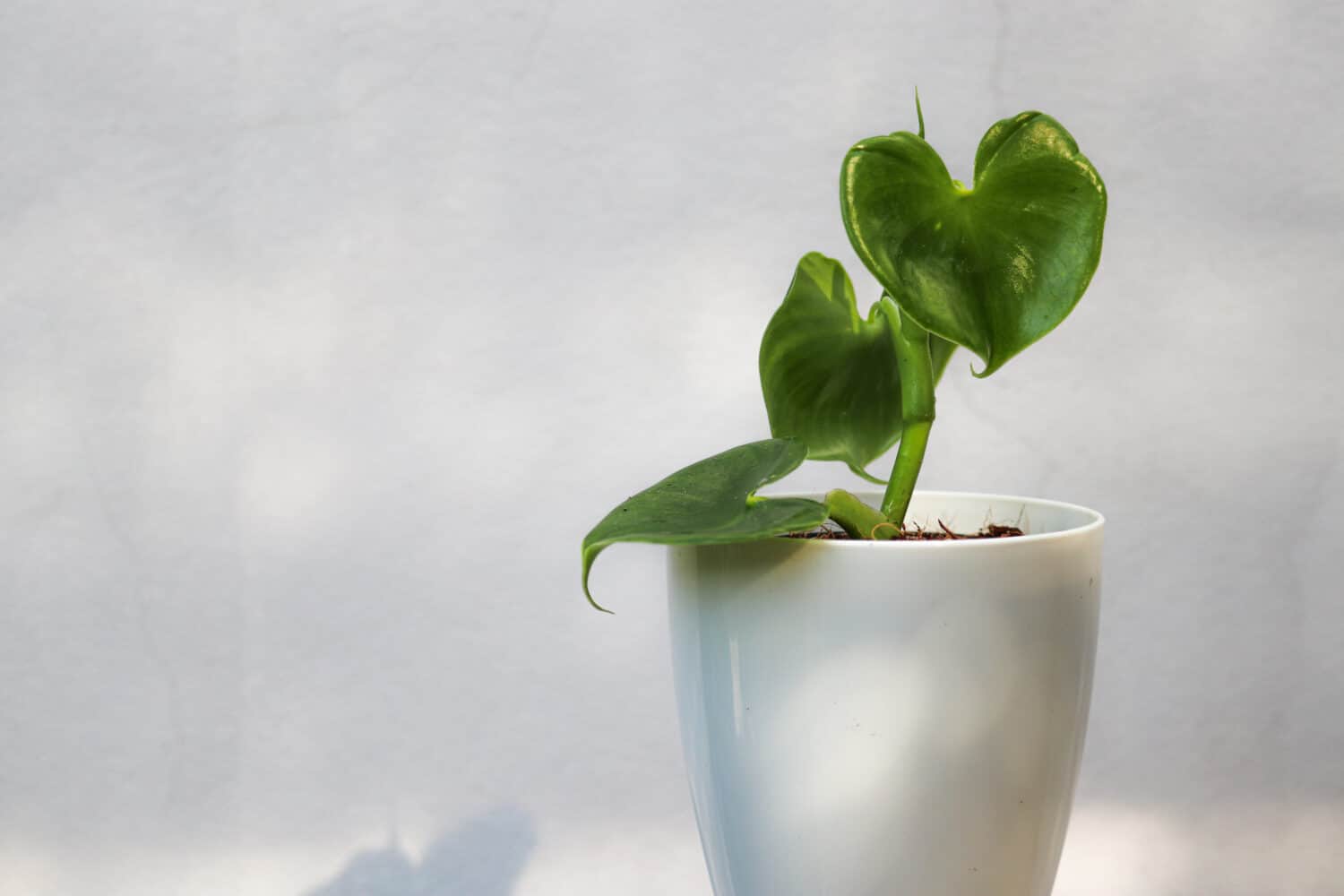
grows natively in Colombia, Peru, and parts of Brazil.
©Raining624/Shutterstock.com
16. Philodendron Brandtianum (Philodendron brandtianum)
Philodendron brandtianum is a variegated vining variety, which has heart-shaped leaves and bears something of a resemblance to the heartleaf philodendron. However, the color of this one’s leaves sets it apart. In fact, this variety has olive-colored green leaves with stripes of silver on the leaves between the plant’s veins. This plant can reach 4 to 5 feet in length. This philodendron grows natively in Colombia, parts of Brazil, and Bolivia.
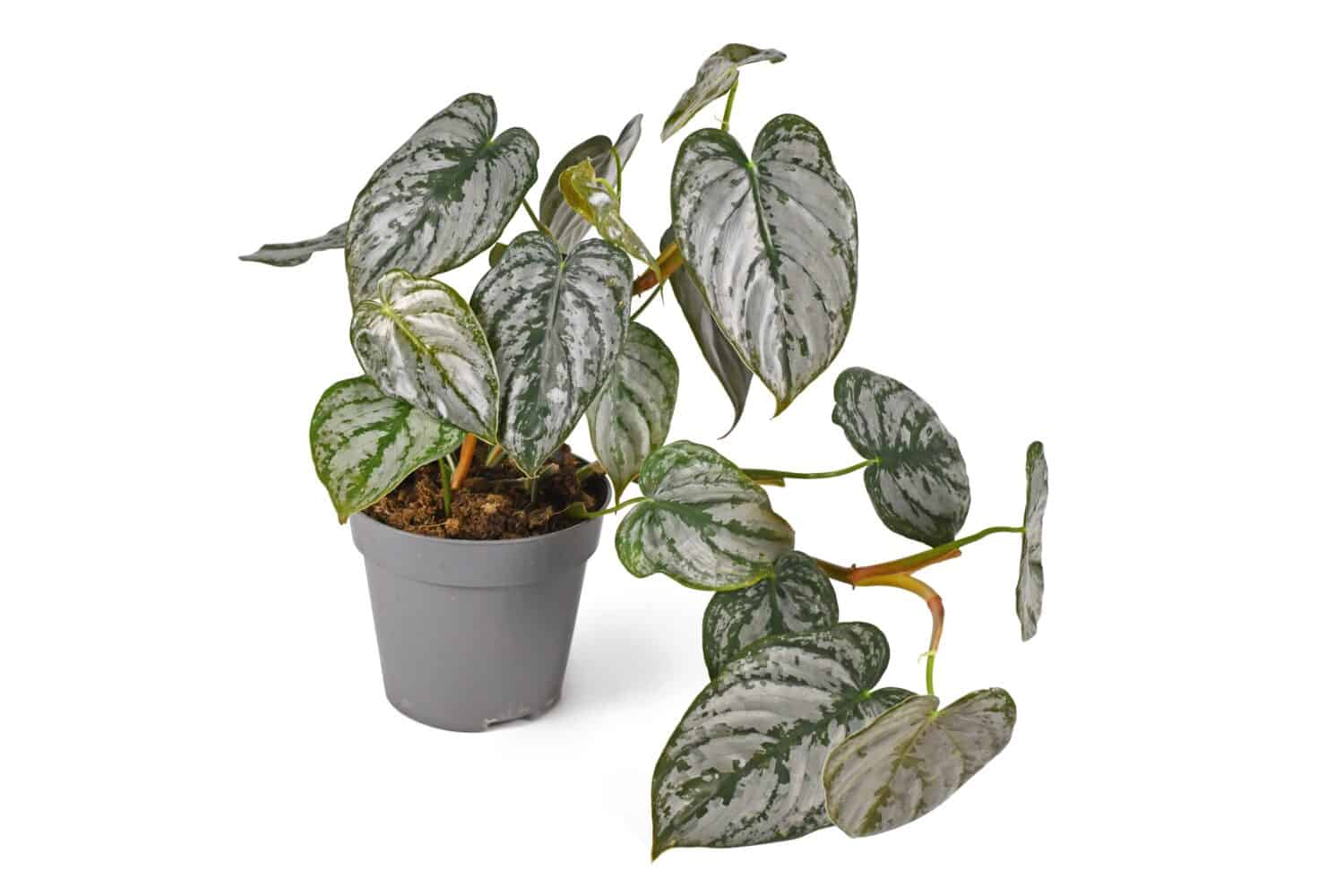
is a variegated vining variety with silver coloring between the veins on its leaves.
©Firn/Shutterstock.com
17. Moonlight Philodendron (Philodendron ‘Moonlight’)
The moonlight philodendron is a bright-colored cultivar with vibrant green, smooth, glossy leaves. This upright philodendron can grow to about 2 feet tall, producing leaves from the base of the plant and presenting as a thick clump of foliage. This plant grows natively in parts of Central and South America.
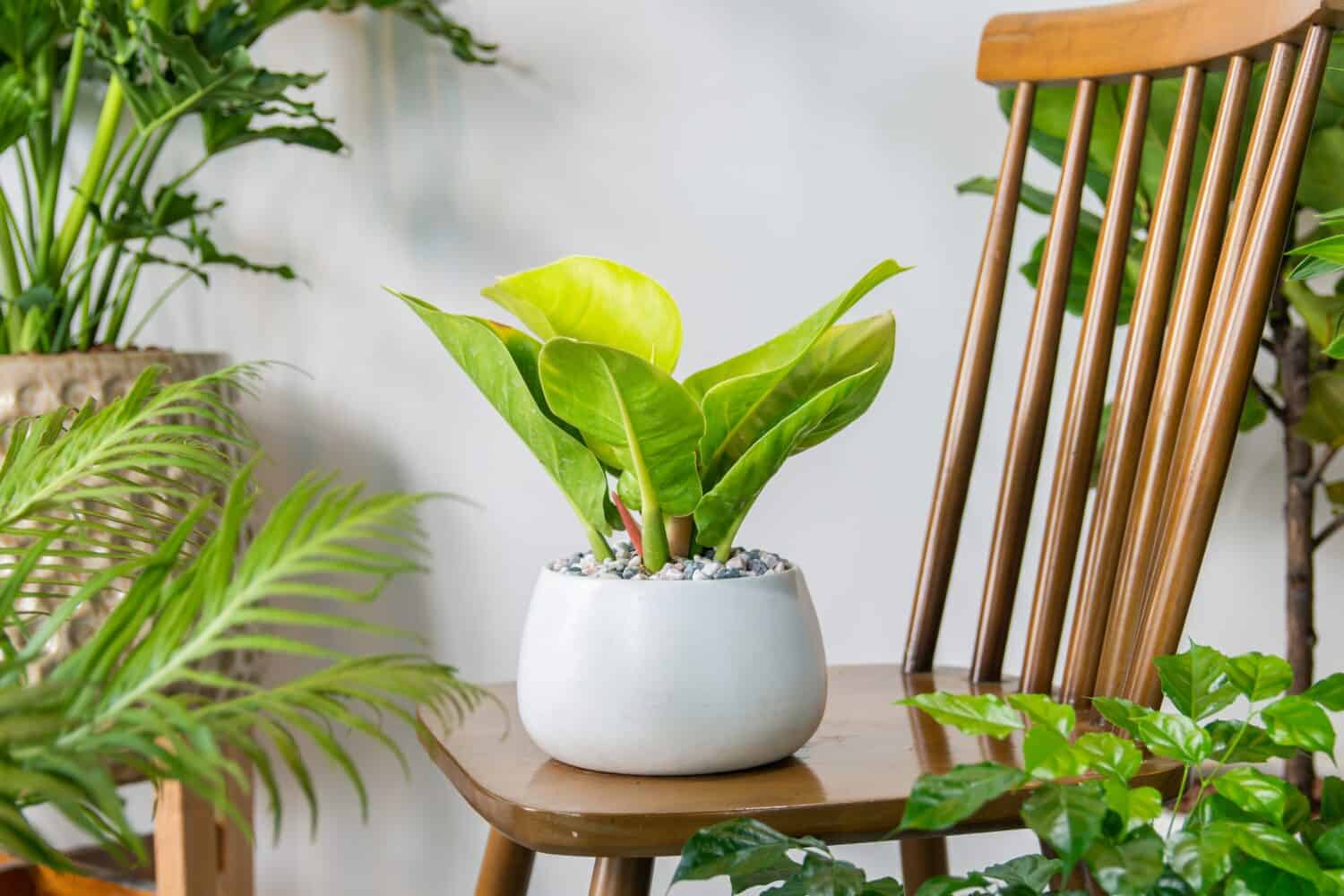
The moonlight philodendron is a bright-colored cultivar with vibrant green, smooth, glossy leaves that grow in clumps from the soil.
©Mid Tran Designer/Shutterstock.com
Summary of The 17 Best Types of Philodendrons
Here are the 17 Best Types of Philodendrons:
| Rank | Types | Scientific Name |
|---|---|---|
| 1 | Green Heartleaf Philodendro | Philodendron hedaraceum |
| 2 | Philodendron Micans | Philodendron micans |
| 3 | Variegated Heart Leaf Philodendron | Philodendron hederaceum ‘Brasil’ |
| 4 | Oak Leaf Philodendron | Philodendron pedatum |
| 5 | Ecuador Philodendron | Philodendron verrucosum |
| 6 | Philodendron Patriciae | Philodendron patriciae ‘Croat’ |
| 7 | Philodendron Xanadu | Thaumatophyllum xanadu |
| 8 | Philodendron Pink Princess | Philodendron erubescens ‘Pink Princess’ |
| 9 | Rojo Congo | Philodendron tatei ‘Congo Rojo’ |
| 10 | Philodendron Prince Orange | Philodendron ‘Prince of Orange’ |
| 11 | Philodendron Gloriosum | Philodendron gloriosum |
| 12 | White Wave | Philodendron birkin |
| 13 | Philodendron Crassinervium | Philodendron crassinervium |
| 14 | Philodendron Esmeraldense | Philodendron esmeraldense |
| 15 | Philodendron Grazielae | Philodendron grazielae |
| 16 | Philodendron Brandtianum | Philodendron brandtianum |
| 17 | Moonlight Philodendron | Philodendron ‘Moonlight’ |
Caring for Your Philodendron
To ensure that your plant has what it needs to thrive, it is important to learn about the unique needs of your philodendron. Depending on whether your plant is a vining or upright species, you may take a different approach. For example, a vining philodendron can be grown with the help of a pole, trellis, or other structure to provide its climbing vines with support – or you can keep it in a basket as a trailing plant! In contrast, a non-vining, upright philodendron does not need any help to grow straight up. However, it will not produce the effect of a long trailing vine!
In general, no matter which type of philodendron you choose, all of the philodendron species named above will thrive in similar environmental conditions. Here are a few checklist items to ensure you give your type of philodendron a supportive environment.
Tips for Growing a Philodendron
- Water your plant regularly. Your philodendron needs plenty of moisture! Allow the first one inch of soil to dry before you water your plant, but do not leave the watering for too long – it could damage your philodendron if the soil completely dries out!
- Plant your philodendron in fertile, well-draining soil.
- Keep the plant humid. A philodendron will thrive in conditions of high humidity that mimic those of its native tropical or rainforest environment! You can keep the plant humid by misting its leaves using a spray bottle or plugging in a humidifier nearby to keep the area around your plant nice and muggy – you can aim for the air to achieve between 60 and 80% humidity. Humid conditions will help your plant thrive and produce bigger, more beautiful leaves!
- Give your philodendron plenty of indirect natural light. If you want to put it outside to enjoy the warmth and humidity, go for it! Just find a shady place with indirect sunlight and monitor the plant.
- Keep the soil pH between 6.5 and 7.5, adjusting the soil as needed.
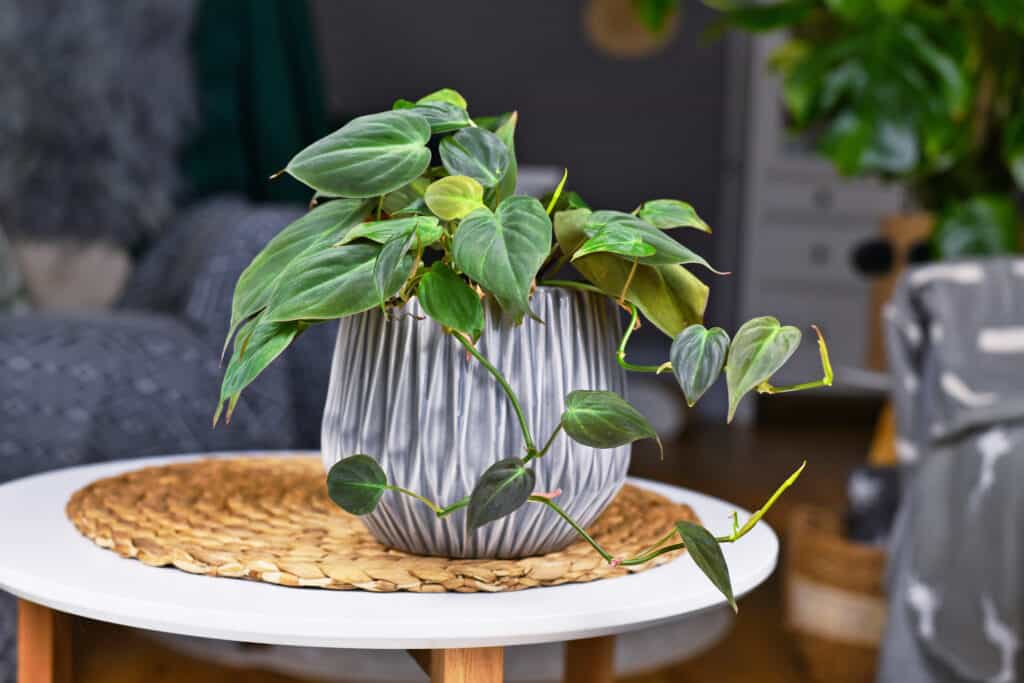
The
Philodendron hederaceumis best suited for tropical environments.
©iStock.com/Firn
The photo featured at the top of this post is © iStock.com/Bilal photos
Thank you for reading! Have some feedback for us? Contact the AZ Animals editorial team.






